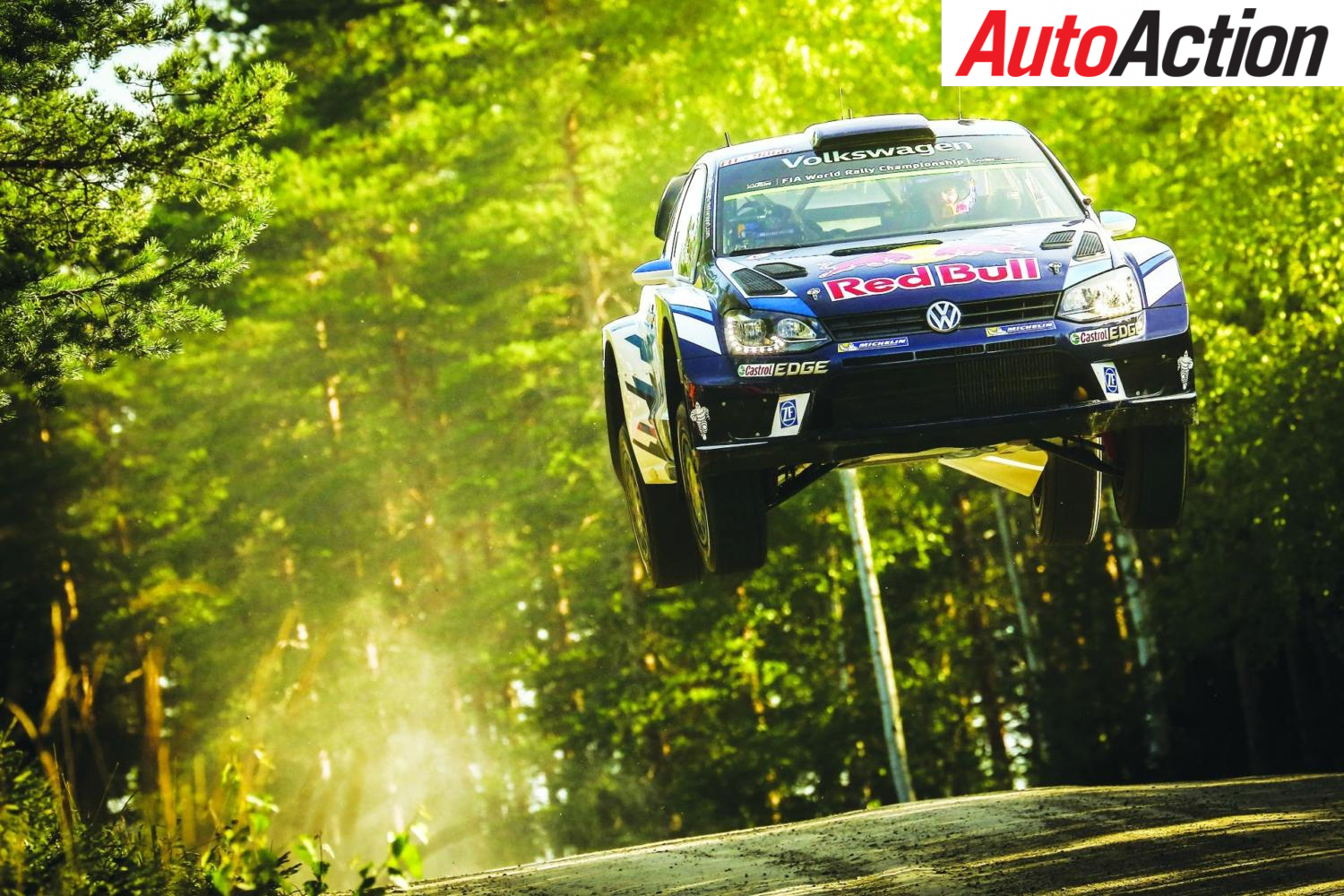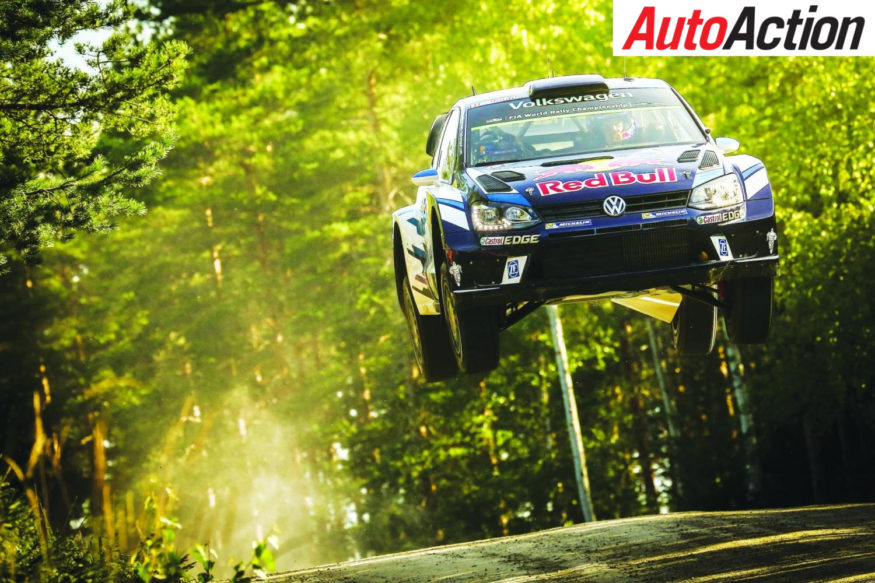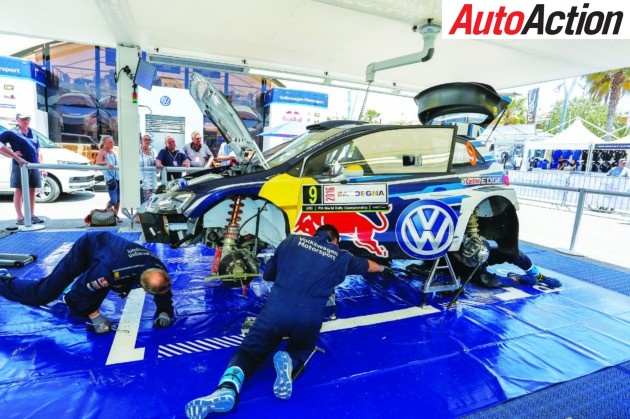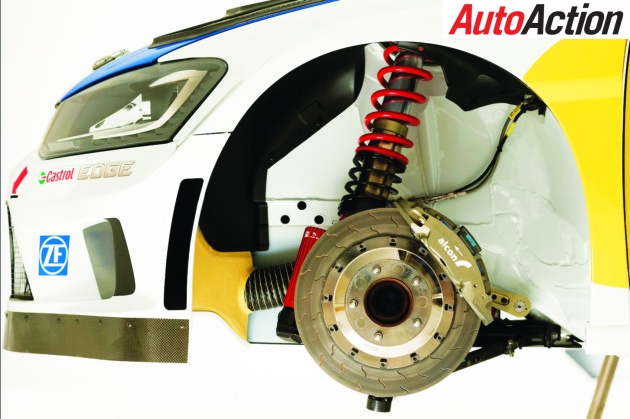UNDER THE SKIN: VOLKSWAGEN POLO R WRC


The Volkswagen Polo R WRC in action in Finland
Volkswagen’s Polo R WRC will make its final appearance at last years Rally Australia. Along the way it has become one of World Rallying’s greatest cars. The development of the car has been an interesting process.
By MANFRED SCHRIFTSTELLER
Following one of the legends of the sport can’t be easy.
That is what Volkswagen faced, when they rolled out the second generation Polo R WRC at the start of the 2015 season.
The car has been competitive – very competitive. The problem was, the first Polo R WRC was outstanding, nearly unbeatable over its two-season life. In 26 WRC events over the 2013 and ’14 seasons, VW won 22 times. In the four-decade history of the World Rally Championship no other car had such a high win ratio – not Lancia’s famed Delta, not even Audi’s Quattro, which changed the face of rallying, forever. So good, that Britain’s Autosport magazine voted the Polo Rally Car of the Year.
So when Volkswagen’s engineers sat down with the task of developing a new weapon, there was some pressure on them to perform…
“We have enjoyed a remarkable success story so far, and one that we are very proud of,” said Volkswagen Motorsport Director, Jost Capito.
“In 2013 and 2014 we won every title on offer in the World Rally Championship at the first attempt with a newly developed car. That is an extraordinary achievement, but counts for nothing going into the next season. We now face a new challenge in 2015. All the manufacturers will line up this season with cars that have been further developed. Like Volkswagen, M-Sport-Ford, Citroën and Hyundai have taken the opportunity to regroup with optimised technology. We all start with no points to our name. Only after the first few rallies will we know exactly how we compare in terms of technology and results.”
The results did not take long in coming. First time out in Monte Carlo, Sebastien Loeb, Jari-Matti Latvala and Andreas Mikkelsen swept the podium and the car went on to win 12 times in 13 events; so far this season, there have been seven wins in 11 events
UPDATE
So the win ratio is 19 from 24. Not quite as good as the previous car, but any make in almost any championship would jump on those numbers.
The Polo was a tough act to follow for the… new Polo. The rally car, of course, is based on the fifth-generation VW Polo, which dates back to 2009. That car is designated as Type 6R, and built on the PQ25 platform that also serves as the basis of Audi’s A1 and Skoda’s Fabia – so, it is no great coincidence that there are competition version of both those cars, the Audi in World Rallycross and the Skoda in the WRC.
Indeed, the Skoda played a part in the development of the Polo. While Volkswagen engineers were developing the latter in 2012, the company entered two S2000 Fabias in 12 WRC rounds of that year’s championship. Early testing involved none other than Carlos Sainz, who was actually the first man to drive a Polo prototype in 2011.
The majority of the test work was conducted by Dieter Depping, test and development driver for Volkswagen Motorsport, and by the time the 2013 season kicked off Volkswagen was ready to race – and win.

The Volkswagen Polo R WRC in being prepare in the service park
The current Polo may look similar to previous versions but there are differences under the skin. There is a lot that is new about the new car; in fact, comparing the 2014 to the ’15, 75 percent of it is new – and most of those changes did not involve the engine.
The aim was simple; ‘SLS’. Make everything ‘Simpler’, ‘Lighter’ and/or ‘Stronger’. How? Well, that’s a long story, but there are some good examples. WRC regulations state that teams are allowed 75 minutes to change a car from gravel to asphalt specification, or vice versa. The 2013/14 version of the car took the full time allotment; on the new one, the process takes 60 minutes – allowing the crews to use an extra 15 minutes, just in case you need to swap a gearbox. Because, doing that takes all of 13 minutes…
The ‘Lighter’ part is also important – but only to a point. Much of what you can and cannot do to a WRC car is guarded by strict regulations, and one of those relates to the weight of the engine and its ancillaries.
The 1.6-litre four-cylinder engine is based on the same unit as the previous generation car, but with some telling differences. The internals were largely unchanged for the 2015 season, but there was an update at the start of the current season, with new pistons inside the block. One of the reasons was that the engine has shed weight – exactly one kilo – and now weighs in right on the FIA’s mandated minimum weight of 81.5kgs.
The mandated air restrictor is 33mm, down 1mm on what was in place before 2011, and turbo boost is limited to 2.5 bar. On the ’16 Polo the exhaust system has been heavily revised, and the changes mean that the new version of the engine produces slightly more power at 318hp – up three from the older version. That’s a gain of one percent, which does not sound like much. Torque is approximately the same, at 430Nm.

Paddle Shift in the Volkswagen Polo R WRC
One of the major areas of change is the transmission; the previous version was somewhat hamstrung by regulations that precluded the use of a paddle-shift gearchange for the life of the car. For 2015, the rule changed and paddle shifts were allowed.
“The new gearbox is operated hydraulically and is far more complex than the system we have used previously,” said François-Xavier Demaison, Technical Project Leader for the WRC at Volkswagen Motorsport.
“For this reason, we dedicated a lot of attention to this component. The hydraulics system had to be adjusted and made larger accordingly. Furthermore, we also developed a completely new gearbox casing. We started work on this back at the start of 2014.”
Developed in conjunction with Xtrac in the UK the new unit carries over practically no parts from the previous transmission, and the drivers approved of the changes as soon as the car’s 5000km test program started.
“We’ll be using the paddle shift on the steering wheel to change gear this year, and I really like it,” said Latvala at the launch of the car.
“On the whole, the new Polo is faster and even better than the 2014 car. And I am not the only one to feel that way – Sébastien and Andreas agree with me.”
Two of the advantages of the all-hydraulic system are faster gearchanges, and fewer reliability issues.
While they were at it, Volkswagen engineers also overhauled some the chassis, largely with a view to improve the car’s aerodynamic efficiency. The cars look similar at first glance, but a closer look reveals that the front spoiler has a different shape, and sits 2cm higher; the rear wings are subtly different, proving similar downforce but with less drag.
The World Rally Polos are something of an oddity; they are the only Polos that Volkswagen makes in Germany. All the other cars for the European market come off the production line in Pamplona, Spain, and turning one of them into a WRC racer takes 350 hours. The process starts at Volkswagen Motorsport’s Hannover base with a bare shell – but one that has not been completely welded at the factory, and which does not have a roof. After seam-welding, the roll cage is installed, the roof goes on and the fit-out proceeds, with the engine and transmission being assembled and installed.
Between the engine and the gearbox sits a clutch package, developed by ZF. Again, the rulemakers play a role here, with a ban on technically more efficient carbon clutches in order to reduce budgets. WRC cars have to make do with a sinter-steel unit, at an estimated cost saving of almost 70 percent. The unit is designed using state-of-the-art Finite Element Method (FEM), with a priority on ensuring that there are as few variations as possible in the clutch’s ‘bite’ point – so that drivers can make consistent starts. Not a lot of point having an efficient clutch if you throw away 10 seconds by stalling at the start of a stage…
The production Polo’s clutch is 260mm in diameter and weighs 17.4kg. In the WRC car, those numbers are, 180mm and 3.25kg.
Perhaps the biggest change in this generation of WRC cars has been the banning of active and centre differentials. The use of electronic or hydraulic systems, which was allowed from 2006-10, is outlawed, though the gains in the development of the mechanical systems are such that the current cars get close to come of the outright stage records, on some events.
The engine itself sits in a revised sub-frame, which gives the front of the car additional rigidity; while aft of that the only chassis changes were made at the start of this season, in the form of the rear wishbones, which are different to the ’15 versions only in the gravel specification of the car.
On tarmac, the car rolls on 18-inch wheels and Michelin tyres, inside which are 355mm Front/350mm Rear brake rotors. On gravel, the car wears 15-inch wheels, with 300mm rotors Front and Rear.

Volkswagen Polo R WRC Brake Package
Alcon supplies the brakes, which run water cooling – for good reason. The brake pads can hit temperatures of 900 degrees, which is as high, or even higher, than the similar items in Formula 1, and higher than in Supercars. But the air that cools F1 brakes can arrive at up to 340kmh – and even in Supercars, it is working at 260kmh and beyond. A WRC car rarely tops 180; indeed, even at the Rally of Finland they are geared for 200kmh maximum, so the air needs all the help it can get in cooling the brakes.
The overall view of the Polo R WRC is one that has been refined to an effective, reliable and versatile rally car, one that has, in a short space of time, taken Volkswagen to the top of the sport.


